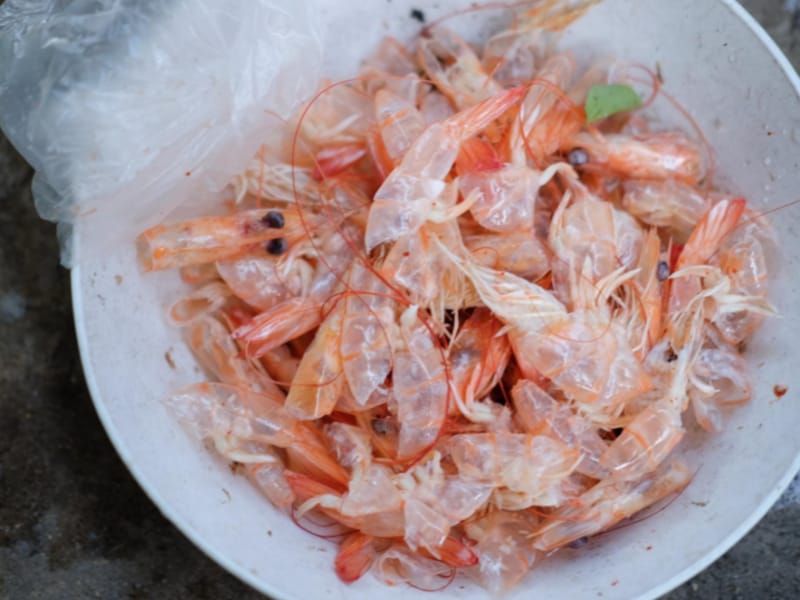Yes, you absolutely can compost shrimp tails! As someone who’s been composting for over a decade, I’ve found that shrimp tails are actually fantastic additions to your compost pile when handled correctly. Let me share everything you need to know about turning those seafood leftovers into garden gold.
Quick Answer
You can safely add shrimp tails to your compost pile. They’re rich in nitrogen and break down quickly in hot compost piles. Just toss them in the middle of an active pile, and they’ll decompose within 7-14 days in optimal conditions.
Benefits of Composting Shrimp Tails
Here’s why you should consider adding shrimp tails to your pile:
- High Nitrogen Content: Shrimp shells have a super low C:N ratio of 8:1, making them an excellent “green” material
- Rich in Calcium: Contains calcium carbonate that enriches your soil
- Natural Pest Control: Contains chitin that helps fight off harmful nematodes
- Quick Decomposition: Breaks down rapidly in hot compost piles
- Antifungal Properties: Helps prevent fungal diseases in your garden
Potential Challenges (And How to Handle Them)
I won’t sugar-coat it – there are some challenges, but they’re easy to manage:
- Smelly Business: Yeah, decomposing seafood isn’t exactly roses
- Attracts Critters: Raccoons and other pests might come sniffing
- Slow Breakdown: Whole shells can take longer to decompose
How to Properly Compost Shrimp Tails
Follow these steps for successful shrimp tail composting
Step 1: Preparation
- Remove any leftover meat
- Rinse off sauces and seasonings
- Crush shells into smaller pieces (optional but speeds up decomposition)
Step 2: Adding to Your Pile
- Dig a hole in the center of your hot pile
- Bury shells 6-12 inches deep
- Cover with existing compost material
- Keep pile moisture at 40-60%
Pro Tips from My Experience
I’ve learned these tricks through trial and error
- Don’t exceed 10% of total pile volume with shells
- Mix with coffee grounds to mask odors
- Turn pile weekly for faster decomposition
- Use enclosed bins to keep pests away
Alternative Options
Not ready for composting? Try these instead:
- Bury directly in garden soil (6-12 inches deep)
- Check if your local composting facility accepts seafood waste
- Use in worm bins (in very small amounts)
Common Questions I Get Asked
Q: How long until they break down?
A: In a hot pile (120°F+), about 7-14 days. Cold piles might take several months.
Q Can I compost other shellfish too?A Yep! Lobster, crab, oyster, and mussel shells all work great.
Q: Will my compost pile stink?
A: If properly buried in the middle of a hot pile, odor is minimal.
Final Thoughts
Composting shrimp tails isn’t just possible – it’s actually pretty awesome for your garden! The key is having an active, hot pile and following basic guidelines. I’ve been doing this for years and the benefits to my garden soil have been amazing.
Remember, every time you toss shrimp tails in the trash, you’re throwing away free garden nutrients. Give it a try – your plants will thank you!
Happy composting, fellow garden enthusiasts!
Note: Remember to always check local regulations regarding composting animal products, as requirements may vary by location.

How long does it take for shrimp shells to decompose
The time required for shrimp shells to decompose will be determined by the temperature of the compost pile. In a hot compost pile with internal temperatures at or above 120F , the shrimp shells break down in 7-14 days. In most compost piles shrimp shells should decompose within a month. However, a cold compost pile that is not active it may take several months to decompose the shrimp shells. [4]
I can’t tell you how many times I’ve added 50-100 shrimp shells to an already active pile, only to go turn it a week later and not see ANY shells. Shrimp shells, prawn shells, crab shells, lobster shells….they all break down lightning fast in an active, hot compost pile. It is fairly incredible.

Are shrimp shells brown or green
Shrimp shells are a ‘green’ compost material, as their C:N ratio is 8. Any material with a C:N ratio less than 30 can be considered a ‘green’ material. [3][6]
As stated above, Shrimp or other crustacean shells are made up of between15%-40% chitin. And the chemical formula for Chitin is C8H13O5N·H2O. To determine if a material is ‘brown’ or ‘green’, we just need to determine it’s C:N ratio. In this case, chitin has eight carbon atoms and one nitrogen per molecule, thus it’s C:N ratio is 8.
